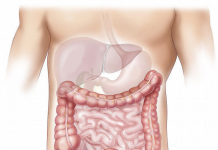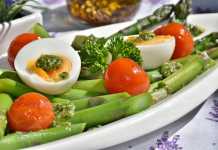How to lose weight in a healthy way? Is there any “right” diet, approved by dietitians?

1. Low-Calorie Diet
Its essence is the therapeutic diet for obesity.
What Is Low-Calorie Diet?
Daily diet is limited to 1500 kcal, primarily due to fast carbohydrates: sweets, sugar, muffins, sugary drinks, etc. One should eat not more than 100-150 grams of bread per day (whole grain bread or bread with bran additives is preferable). Not more than 80 grams of fats are allowed, excluding fatty meat, fish, cottage cheese. The protein content in the diet stays the same or increases slightly, about 60 grams per day (legumes, eggs, lean meat). Protein intake increases energy consumption in the process of digestion and creates the feeling of satiety. Alcoholic beverages are prohibited as they are high-calorie drinks, and salt is sharply restricted.
Meals: 5-6 times a day; the portions should be of sufficient size to feel satiety.
The basis of the menu: foods rich in vitamins, macro- and micronutrients, as well as fiber.
Low-Calorie Diet Health Benefits
Like any therapeutic diet, this system optimizes nutrition, making it more balanced and healthy. It is suitable for diseases of the gastrointestinal tract and increases stress resistance of the organism.
Low-Calorie Diet Disadvantages
There is a possibility of diet failure, so you need to keep yourself from overeating.
A useful fact: the feeling of satiety comes after eating at least 3000 kcal of biscuits and patties, but if you eat vegetables, cereals, or grains, you will need only 1500 kcal.
2. Split Meals for Stomach Patients
This diet has a therapeutic effect in case of obesity and the diseases of the gastrointestinal tract.
What Is Split Meals?
General characteristics: you should eat often, but in small portions. How often, how small? There are two approaches:
- Eat as soon as you feel hungry. Once you feel saturation, stop eating. If you want to eat even half an hour later, have a snack. As a result, the person losing weight is eating from morning to evening.
- Eat 5-6 times a day. Three times a day, you should eat the full meal to feel saturation (in any case, do not overeat). There are also 2-3 small meals, when you should just have a bite.
The basis of the menu: limit or exclude flour and sweet foods from your diet. Drink at least 2 liters of pure non-carbonated water per day.
Split Meals Advantages
If you have no feeling of hunger, there is no need to overeat; the diet is useful in case of pathologies of the gastrointestinal tract. It prevents the development of hypertension and atherosclerosis, has a positive effect on the whole body, and leads to normal sleep, which also contributes to weight loss.
Split Meals Disadvantages
It is uncomfortable to always take your food with you, since skipping snacks is not recommended.
A useful fact: the more often the person eats, the fewer calories he/she needs to feel satiety.
3. Low-Fat Diet for Maintaining Weight
As a matter of fact, this is a type of low-calorie diet, but it is improved: a person is allowed to eat no more than 40 grams of fat per day.
What Can Be Eaten in a Low-Fat Diet?
The daily caloric intake is reduced by reducing portion sizes, limiting sweets, eating low-fat foods: lean meat (if it is chicken, it should be eaten without skin), fish (pollock, cod). Oily mackerel or salmon can be enjoyed only 1-2 times a month. Reducing the amount of fatty foods leads to gradual burning of body fat, so a person loses weight even when consuming large portions. Low-fat diet can be followed by most people for a long time and without damage to health.
The basis of the menu: lean meat and fish, fruits, vegetables, low-fat cottage cheese, yoghurt, milk, fat-free sweets (marshmallow, jelly).
Should You Avoid Fats at All?
It is impossible to abandon fats as it is fraught with complications to health. One should limit them to the reasonable amount, otherwise it will have a negative influence on the liver. To protect liver cells against excessive loads, one needs essential phospholipids, highly polyunsaturated fats which are the main components of cell membranes and structures. The body does not produce them, but they can be found in eggs, unrefined vegetable oils of the first extraction (olive, sunflower, soy, corn), and in beans. You can flavor the food with turmeric, and fill the salads with natural yoghurt.
Low-Fat Diet Advantages
The pros of the low-fat diet include its being more tolerant than other diets, weight loss is gradual and smooth, so there is no stress to the body, the blood pressure normalizes, the levels of “bad” cholesterol in blood are reduced, which is useful in diseases of the gastrointestinal tract.
Low-Fat Diet Disadvantages
Strict limitation of fats (less than 15-20 grams per day) may cause a deficiency of fat-soluble vitamins A, D, E, K, and polyunsaturated fatty acids.
A useful fact: low-fat diet helps you lose the “fat” calories, which are the primary source of creating fat deposits in the body.










